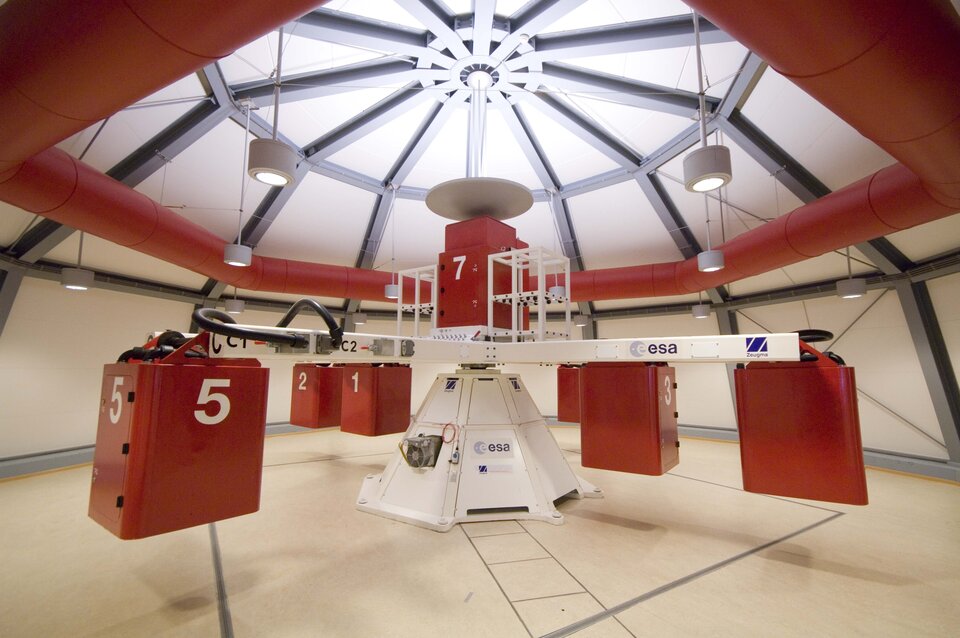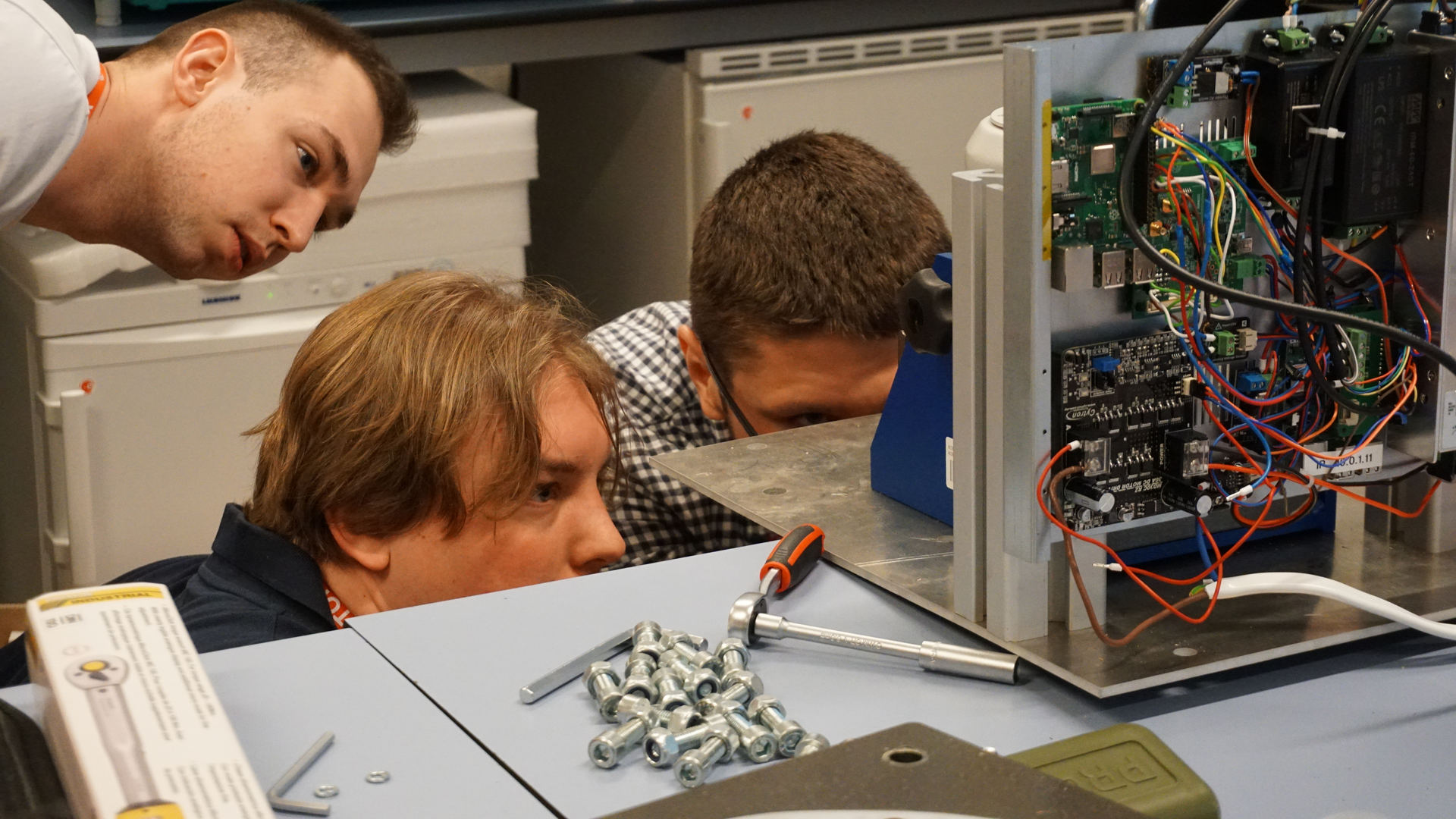Large Diameter Centrifuge
In brief
In order to understand and describe the influence of gravity in systems, the observation of behaviour in microgravity and at 1 g (where g is the gravitational acceleration at the surface of the Earth) may not always be sufficient. A broad gravity spectrum must be explored to complete the scientific picture of how gravity has an impact on a system, therefore samples have to be exposed to a variety of acceleration values above 1 g (hypergravity).
In-depth
For this reason, the Academy Experiments programme offers university students (bachelor, master and PhD levels) the opportunity to perform scientific or technological research in hypergravity conditions in a number of fields such as biology, biochemistry, microbiology, optical physics, material sciences, fluid dynamics, geology and plasma physics. This is done using a Large Diameter Centrifuge.
Enjoy the video below to discover all the platforms! For the Large Diameter Centrifuge chapter go to minute 57:34.
What is the Large Diameter Centrifuge?

A Large Diameter Centrifuge (LDC) has been developed by ESA that can cater to experiments requiring hypergravity conditions ranging from 1 to 20 g. The LDC is part of the Life and Physical Sciences Instrumentation and Life Support Laboratory (LIS) at ESA/ESTEC in the Netherlands.
The diameter of the LDC is eight metres. It has four arms, each of which can support two gondolas with a maximum payload of 80 kg per gondola. In practice however, up to six gondolas can be used for an experiment plus one additional gondola in the centre for control or reference purposes. The hypergravity field inside the gondolas is simulated by the centripetal forces due to the centrifuge rotation.
The LDC is flexible in terms of experiment scenarios, duration and available equipment to use. This means that the system is able to execute and manage experiments that last from one minute up to six months, without stopping, although student experiments are limited in duration (no more than 60 hours non-stop). The gondolas can be supplied with water and gas from bottles stored in the centre of the LDC, vastly broadening the range of possible tests and increasing experiment duration while avoiding intermediate stops.
The LDC is operated by ESA engineers via an operator work station in a control room. The experiments can also be controlled and monitored by the users via the science work stations through the LabView programme. The users have access to the LDC sensor data and the gondolas’ scientific equipment.
Programme and Technical constraints
While defining their projects, applicants should carefully read the LDC Experimenter User Manual. Additionally they should keep in mind the following constraints that apply to the experiments:
- Experiments requiring high temperatures, open flames or similar conditions cannot be performed within the LDC gondolas. Exceptions may be discussed, but the experiment set-up must be well contained and autonomous and should present no hazard to either personnel or the LDC and its gondolas
- LDC gondolas do not provide active cooling
- Power availability in each gondola is limited to 1.3 kW
- The experiments should not take up an area of more than 50 cm x 50 cm x 75 cm
- The maximum payload per gondola is 80 kg
- Teams should consider Coriolis effects and control accordingly
Campaign
Teams are typically granted 2.5 days’ access to the centrifuge per campaign. Laboratory preparation time required before or after the centrifugation portion of the experiment can be discussed on an ad hoc basis and will be discussed in depth during the development phase of the experiment.


